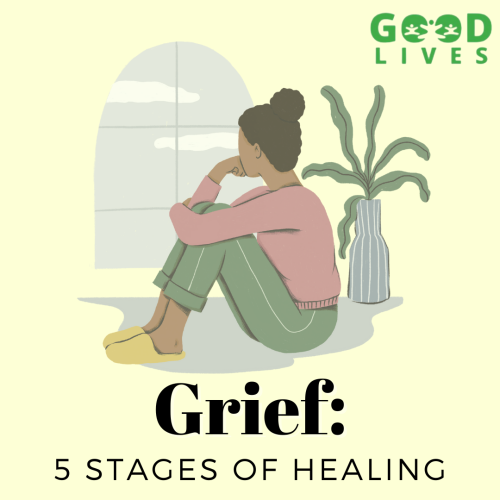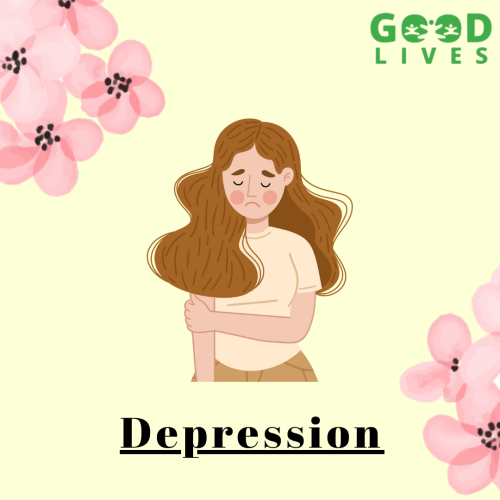
Grief is a universal mortal experience that arises from the loss of a loved one, a significant life change, or indeed the loss of an awaited future. First introduced by psychiatrist Elisabeth Kübler-Ross in her groundbreaking book “On Death and Dying” in 1969, the five stages of grief have since become an abecedarian frame for understanding the emotional trip that individuals go through when dealing with loss. These stages, frequently appertained to as the Kübler- Ross model, give perceptivity into the complex process of grieving.
It is important to note that not everyone directly gets these stages, and the intensity and duration of each stage can vary extensively among individuals. In this blog, we will claw into each of the five stages of grief, exploring their significance and immolation perceptivity into how they contribute to the mending process.
What are the 5 stages of grief?
Grief- Stage 1: Denial

Denial is frequently the original response to a significant loss. This stage serves as a defensive medium, allowing individuals to absorb the shocking news gradationally. The mind struggles to grasp the reality of the situation, leading to studies like,” This can not be passing” or” It’s just a bad dream.” Denial acts as a bumper, furnishing time for the emotional and internal capabilities to come to terms with the harsh verity.
While denial may feel ineffective, it serves as a temporary buffer against the inviting feelings we feel during a loss. By creating a cerebral distance from the reality of the situation, people can gradationally acclimate to the new circumstances. still, it’s pivotal not to remain in this stage for an extended period, as dragged denial can delay the natural progression of the grieving process.
Grief- Stage 2: Wrathfulness

As the denial starts to fade, the suppressed feelings begin to surface, frequently displaying as wrathfulness. This wrathfulness isn’t solely directed at the loss itself but can also be directed toward others, the situation, or indeed oneself. passions of injustice, resentment, and frustration arise from the belief that the loss is illegal or undeserved.
Wrathfulness is a normal and natural response to grief, allowing people to release bottled feelings. It serves as a way to channel and personalize the pain that’s delicate to comprehend internally. It’s important to note that while wrathfulness can be formative in helping individuals reuse their grief, it can also be destructive if not managed duly. Chancing healthy outlets for this wrathfulness, similar to physical exertion, creative expression, or remedy, can prop in moving through this stage toward mending.
Grief- Stage 3: Logrolling

As the intensity of wrathfulness subsides, individualities frequently enter the logrolling stage. It’s characterized by a series of “what if” and “if only” studies. To recapture a sense of control and negotiate with the macrocosm, people may engage in internal discourses like, “If only I had done effects else, this wouldn’t have happened” or “What if I had been there to help it?”
Logrolling is an expression of the stopgap for history and the desire to rewrite history. It’s a way for people to hassle with their passions of incompetence in the face of loss. still, it’s necessary to ensure that while logrolling might give temporary relief, it can not change the history. This stage frequently involves a struggle to accept the permanence of the loss and the consummation that some effects are beyond mortal control.
Grief- Stage 4: Depression

Depression is maybe the most recognizable and complex stage of grief. During this phase, individuals witness deep sadness, a sense of emptiness, and a lack of interest in effects that formerly brought joy. The weight of the loss becomes palpable, and passions of forlornness and insulation can come inviting.
Depression in grief isn’t the same as clinical depression, although it shares parallels. It’s a natural response to loss and can not always be treated as a medical condition. This stage allows individuals to defy the reality of the situation and the depth of their feelings. It’s essential for those grieving to seek support during this phase, whether through musketeers, family, or internal health professionals. Connecting with others who have endured analogous losses can give a sense of connection and confirmation, helping people realize they aren’t alone in their passions.
Are you ignorant of simple ways to treat depression? Go through our blog to know more about it!
Grief- Stage 5: Acceptance

The final stage of grief, acceptance, doesn’t indicate a complete absence of pain but rather a recognition that the loss is a part of one’s life story. Acceptance doesn’t mean” moving on” or forgetting about the loss; rather, it involves integrating the reality of the loss into one ‘s sense of self and choosing a way to move forward with life.
Reaching the acceptance stage doesn’t mean the grief trip is complete or that the pain is entirely gone. Rather, it signifies a turning point where the person begins to re-engage with life, chancing new meaning and purpose. This stage is characterized by a sense of peace and an amenability to embrace the assignments and growth that can crop from the experience of loss.
The five stages of grief offer a roadmap for understanding the complex emotional trip that accompanies loss. While these stages give sapience into the typical progression of feelings, it’s important to remember that grieving is a deeply particular experience, and not everyone will go through these stages in the same way or order. Some individuals may skip certain stages, witness them out of sequence, or readdress certain stages at different times. It’s also important to note that mending isn’t about” getting over” the loss but about chancing ways to live with it, integrating it into one’s life story, and moving forward with renewed purpose and meaning.
During times of grief, seeking support from friends, family, support groups, or mental health professionals can give the necessary backing and understanding.
0 Comments